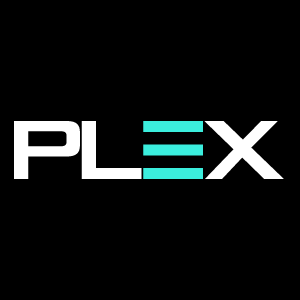Aligning demand with supply is a critical function for any company. And it’s one with a lot of moving parts. The right demand plan must have a balance of inputs from all areas of the company to create forecasts that accurately predict a product’s future requirements. These forecasts may be external and include customer orders and market projections. Or they may be internal in the form of raw material needs.
By developing accurate demand plans, planners impact how the company should respond to become more demand-driven and interpret patterns over time. Done correctly, accurate demand planning can reduce inventory costs, reduce stockouts and overages, improve on-time delivery and provide a path to better negotiate pricing with vendors over time.
Demand Planning Method
There are many different methods for demand planning. And before a company can enjoy the benefit of accurate forecasts, the right method must be chosen. It should be optimal for the type of production, industry, and customer base the company services. But which planning method should you choose? With so many variations to choose from, selecting can be scary and even maddening.
Here are a few of the most common methods in use today:
Survey – The survey method for demand planning is best used for short-term forecasting. It seeks to determine future purchasing behavior to gauge current and future demand. It may include different survey types depending on company resources. Surveying may include expert opinion polls where experts provide input on products. It may also include group surveys of experts like focus groups where experts render opinions collaboratively until a consensus is reached. Or it may consist of a market experiment to determine consumer behavior in actual market conditions.
Barometric – Barometric forecasting uses past demand to predict future demand. The barometric method differs from trend analysis by using a combination of three “indicators” to gauge demand. Those indicators may change based on external factors and demand is forecasted based on the analysis of all three indicators. Indicators used are leading indicators, lagging indicators, and coincidental indicators. Leading indicators are events for demand that move up or down. Lagging indicators impact trends after time has passed. And coincidental indicators may shift demand up or down depending on economic activities. Barometric planning requires analyzing all three indicators accurately to create a forecast.
Statistical – The statistical method uses extensive amounts of data. Because it uses historical data as well as cross-sectional data, such as expert opinions and marketing surveys, it is a good method for forecasting demand long-term. Statistical methods are bias-free and accurate because they rely on actual data collected over time. The statistical method is very effective in companies with ERP systems where data is consolidated across the organization and non-siloed. The deeper the integration of an ERP system with company data, the more accurate statistical methods become. Demand forecasting based on the statistical method will usually utilize one of two forms:
- Trend Projection: When there is a large amount of data available, reviewing that historical data over time can yield probable future behavior. It can also be customized to specific time periods such as seasonal trends, monthly, quarterly, yearly, and other time blocks.
- Regression Analysis: By mapping out dependent and independent variables and establishing a relationship between them, demand can be determined. Dependent variables may include things such as quantity ordered while independent variables may consist of the price of goods, income, comparison of similar goods, and substitute comparisons.
Econometric – The econometric method uses statistical analysis combined with economic theory. Considered the most accurate demand forecasting method, econometric models use two forms, regression, and simultaneous equations. Regression models under econometric methods may use a single variable or multivariable analysis depending on factors affecting demand. Simultaneous Equations uses very complex variable modeling and combined equations to gauge demand.
Choosing the Best Method
For many small to medium-sized, demand planning can be a maddening undertaking. Mode of production, customer base, market, finances, and other factors will determine which method a company will use for demand planning. Simple methods, such as surveys, focus heavily on opinion and may not allow a company to take advantage of planning software’s most advanced features.
While more complex, barometric depends on the quality of data inputs to be effective and may not deliver the most accurate forecasts with software if those indicators are not accurate. But because they are inherently data-driven, statistical and econometric demand planning methods work best with planning software.
These methods allow for accurate analysis and delivery of forecasts because they can utilize the deep analytics of planning software. As companies scale, which planning method is most optimal for them may change as well. Demand planning software can enable companies who have traditionally utilized one planning method due to cost or resources to move to a more sophisticated method.
Matching Method with Demand Planning Software
Demand planning software can drive accurate, data-driven forecasts that can build a foundation for a company’s S&OP processes. It should be cloud-based, agile, and flexible enough to work with any planning method. And it should be functional enough to allow changes from one methodology to another over time – an important consideration for small and medium-sized businesses (SMBs) looking to improve forecasting.
Today’s demand planning software can be integrated with ERP and MRP systems via API, providing access to deep data across an organization. Planning software is powerful enough to use any of the advanced planning methods to deliver functionality such as:
- Advanced “what-if” analysis based on multiple scenarios.
- Quickly identify demand patterns, trends, and seasonality.
- Project revenue, cost of goods sold, and margin at the item level.
- Forecast multiple levels of aggregation using demand shaping and sensing data.
When you need to align your supply with your demand, DemandCaster provides advanced supply planning and demand planning software for manufacturing, distribution, and other industries.
Related Articles
